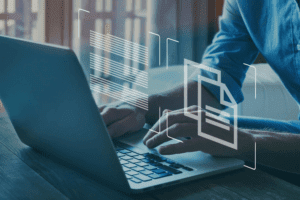
Invoice coding is a process for recording invoice line items using the general ledger chart of accounts. GL accounts identify revenue or expenditure categories, departments, and locations to compare with budgets and track revenue or business spending. Invoice coding for accounts receivable and accounts payable may include other identifying information, such as lot tracking.
Importance of QR code in enhancing invoice efficiency.
The QR code will then be printed on the human-readable invoice by the taxpayer. DOKKA features a user-friendly interface that is easy to use, even without extensive training. However, DOKKA also offers training and support to ensure that everyone involved in the accounts payable process can use the system effectively. Tax codes and accounting standards aren’t static, they change over time, sometimes frequently. Keeping up with these changes can be challenging, especially if your company operates in multiple jurisdictions with different tax laws. These errors might seem small at first, but they can lead to significant issues down the road, such as incorrect financial statements, overpayments, or underpayments.
What is invoice coding in accounts payable?
In contrast to humans sorting, coding, and plugging data into a system, AP automation software can take the guesswork out of the workflow. It will automatically capture and read all invoices, then correctly match them to the right PO or other relevant documents (such as a note of goods received) in a split-second, all without human intervention. At the same time, intelligent automation doesn’t require the AP team to change trial balance things around or learn new tricks. This means doing away with as many manual, paper-based steps as possible and replacing humans with automation. Our platform supports multi-dimensional cost allocation, allowing you to split invoice amounts across multiple departments, cost centers, or internal projects.
- Credit the cash sub-account (for a specific bank account) for the amount paid and code any early payment discounts earned as a credit to the discounts account.
- It delivers unmatched savings, speed, and security with affordable zero-risk subscriptions to more than 5,000 customers and 300,000 users worldwide.
- QR code or Quick Response code is a two-dimensional barcode that is designed in machine-readable format.
- Switching from manual to automated invoice coding offers more than just time savings — it transforms the way AP teams operate.
- Within financial processes—especially accounts payable—invoice coding serves as the bridge between receiving an invoice and recording the expense in the business’s accounting system.
- See how HighRadius transforms invoice coding into a streamlined, intelligent workflow.
e-Invoicing – QR Code for B2C Transactions

Invoice coding is Accounts Payable Management a tedious and error-prone process that has long frustrated accounts payable staff. Create beautiful invoices in a matter minutes with our Invoicing Excel and Google Sheets Template. With dynamic formulas, your data auto populates and is easily sendable to customers. CAs, experts and businesses can get GST ready with Clear GST software & certification course.


Embracing certain best practices can transform these obstacles into opportunities for greater accuracy and efficiency. This system of coding organizes your financial transactions and makes it possible to properly track expenses, making it more efficient to oversee your financials. In this how to code invoices blog, we will discuss the intricacies of invoice QR codes, their application, steps to verify them and more. No, generation/printing of the Dynamic QR Code is not required in cases where payment is made before the issuance of the invoice.
- We’ve walked through the twists and turns of traditional invoice coding challenges, now let’s pivot to a straighter path.
- With Nanonets’ user-friendly interface, you can easily retrain your model, update GL codes, or modify approval workflows without IT intervention.
- One need not enter the amount, enter the UPI PIN/password and the payment will be made as per the amount mentioned on the e-invoice.
- With Nanonets, you can automate 3-way matching by setting up database matching as part of your validation rules.
- For example, you might create a rule to route invoices over a certain amount to a senior finance manager, while standard invoices go to the AP team.
- The e-invoicing system has transformed how businesses manage their reporting and invoicing processes.
When you add high turnover and a relatively long “time to productivity” to the mix, accounts payable invoice processes can really suffer. The real problem with GL codes is that they’re called “codes” for a reason. Using the correct codes for the right departments or business processes requires manual data entry and a look-up table.

Step 2b: Non-PO invoice coding
- AP automation solutions also maintain complete AP audit trails by recording every task, communication, and document in the invoice lifecycle.
- Billy learns your approval workflow over time, so after processing a few invoices, it will start suggesting the appropriate approver.
- As part of coding invoices for accounts payable, tax account coding is also required.
- By weaving these best practices into the fabric of your AP operations, you’re not just sidestepping potential pitfalls; you’re also paving a smoother, more efficient path forward.
- Approvers, equipped with clear account codes and purchase order details, receive notifications to digitally review and approve invoices.
Invoice coding is the process of embedding additional information into an invoice using a unique system of codes. If the marketing team created a PO for a $10,000 ad campaign coded to “Advertising Expense” (GL 6300), the invoice should use the same coding unless something has changed. Earn 3.0% APY on your AP account balance to offset—or even exceed—your software costs. The e-invoicing is also applicable for businesses with more than ₹10 crore turnover W.E.F 1st October, 2022.
